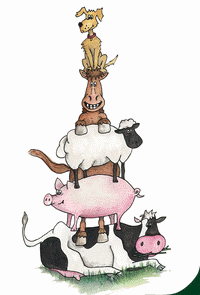Controlling subclinical ketosis with monensin can reduce curative antibiotic use by up to 25%
A presentation at a principal European conference has shown that using monensin in dairy cows at high risk of developing subclinical ketosis reduces curative antibiotic use by 25%.
This work, by the University of Toulouse, has shown that using a monensin bolus in cows at high risk of getting subclinical ketosis led to a 25% reduction in antibiotics to treat and cure conditions associated with the metabolic condition. Veterinary cattle health specialist, Professor Didier Raboisson presented the results to leading cattle vets, academics and representatives of the pharmaceutical industry at the European Buiatrics Forum in Rome in October.
Fiona Anderson MRCVS of Elanco says: “Responsible use of antimicrobials must be the target for veterinary medicine. Reducing use by whatever means could help improve the antimicrobial resistance situation. This new study shows that using monensin, which is available in the form of a Kexxtone bolus, is a powerful way to cut antibiotic use in the dairy herd. This is in addition to monensin already proven to be a valuable tool to reduce the risk of ketosis and subclinical ketosis and its associated losses in dairy herd productivity and profitability.”
Subclinical ketosis is very common. It can affect up to 30% of cows in early lactation with a large variation between herds. 2 It can be very costly for a dairy herd. A study from 2015 found that for a 100 cow herd with 30% ketosis, the direct and indirect costs can be around £10,416 or around £347 per affected cow.
Cows affected by subclinical ketosis are at a higher risk of getting mastitis and metritis. They are also at higher risk of developing displaced abomasum, retained placenta and cystic ovaries and consequently face a higher culling risk. Subclinical ketosis also lowers milk production, reduces conception rates and lengthens calving intervals.
If ketosis is an issue in a dairy herd, targeted administration of monensin in a Kexxtone bolus to cows at high risk of developing ketosis reduces the incidences of ketosis by 74%. The bolus is given three weeks before calving and provides coverage during the main risk period for the condition. Kexxtone uses monensin to improve rumen function and increase glucose delivery. This ultimately increases the energy available and buffers the dairy cow against the tendency to drop into negative energy balance.
To make a big difference to clients’ profitability, Fiona encourages vets to not just consider the traditional nutritional intervention and the emergency treatment of ketosis cases, but to develop an effective strategy to highlight cows at risk of subclinical ketosis and to take targeted preventative action.
“Vets who can offer positive interventions to subclinical ketosis and its associated losses in the dairy herd are going to be increasingly important to their clients’ herd health planning,” she concludes.

